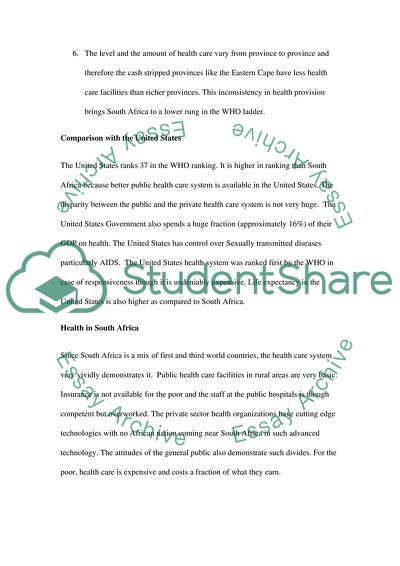Cite this document
(Health Care in South Africa Research Paper Example | Topics and Well Written Essays - 1250 words - 1, n.d.)
Health Care in South Africa Research Paper Example | Topics and Well Written Essays - 1250 words - 1. https://studentshare.org/medical-science/1743113-health-in-south-africa-and-the-usa
Health Care in South Africa Research Paper Example | Topics and Well Written Essays - 1250 words - 1. https://studentshare.org/medical-science/1743113-health-in-south-africa-and-the-usa
(Health Care in South Africa Research Paper Example | Topics and Well Written Essays - 1250 Words - 1)
Health Care in South Africa Research Paper Example | Topics and Well Written Essays - 1250 Words - 1. https://studentshare.org/medical-science/1743113-health-in-south-africa-and-the-usa.
Health Care in South Africa Research Paper Example | Topics and Well Written Essays - 1250 Words - 1. https://studentshare.org/medical-science/1743113-health-in-south-africa-and-the-usa.
“Health Care in South Africa Research Paper Example | Topics and Well Written Essays - 1250 Words - 1”. https://studentshare.org/medical-science/1743113-health-in-south-africa-and-the-usa.


